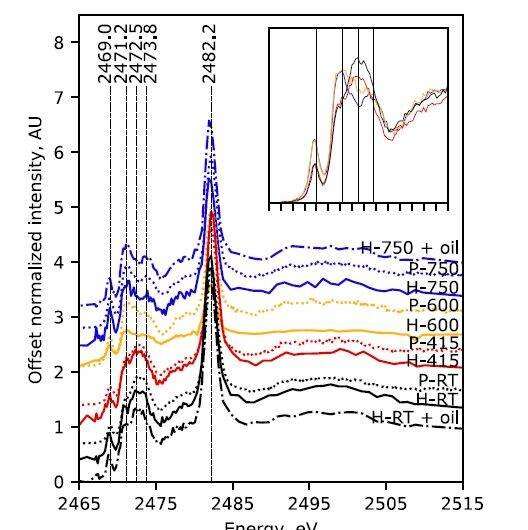How did the old masters make their ultramarine?

Researchers at the Rijksmuseum, the University of Amsterdam, VU Amsterdam and the European Synchrotron Radiation Facility (ESRF) have developed a method that reveals how the costly pigment ultramarine was prepared from the semi-precious stone lapis lazuli. Thanks to X-ray examinations of paint samples, they can now look back more than four hundred years to determine whether the blue stones were brought to a red heat during the pigment extraction process. The results, recently published in the leading journal Science Advances, also help to cast light on the disastrous "ultramarine disease."
The costly pigment ultramarine blue—during the 17th century, it was more expensive than gold—is made from the blue semi-precious stone lapis lazuli. Its blue colour is due to the mineral lazurite, but more than half of lapis lazuli is comprised of all sorts of other minerals that are grey, yellow and, most of all, white. In order to remove the mineral impurities and to obtain truly luminous ultramarine, the painters used the laborious and time-consuming 'pastello extraction." They ground the lapis lazuli to powder and then kneaded it with a paste of resin, beeswax and oil to create a fist-sized ball. After a week or two, the ball was 'rinsed out' under water with kneading motions. In this way, the ultramarine is released, while the impurities remain behind in the paste. After filtering and drying, they obtained a radiant, bright blue pigment.
Girls' hands
The Amsterdam-based researchers recreated the pastello extraction in the lab on the basis of historical recipes. They followed the historical instructions as closely as possible—even if these were sometimes pretty strange. To give one example, the pigment should be washed out by 'the hands of a young girl." "This actually turned out to be a good tip," says research leader Katrien Keune, Head of Science at the Rijksmuseum and also a UvA researcher. "The men in our team were unable to cleanly isolate the ultramarine, but the female students succeeded in doing just that. It seems that this requires a certain subtle skill."
Once the team had got to grips with the pigment preparation, they shifted their focus to the real goal of the research. Keune: "Some recipes mention heating the lapis lazuli stone before you grind it to powder. We were really curious to find out what effect this treatment—which involves heating the stone until it glows red hot—would have. Above all, could we find a way to establish whether the ultramarine in historical paintings had also been subjected to this heating?"
Soft X-rays
In very practical terms, it soon became clear that heating the stone positively influenced the isolation of the ultramarine. "Without heating, the extraction process was significantly more difficult," says Keune. "So this is an important indication of why some historical recipes say you need to heat the lapis lazuli. It's not as if this heating results in deeper blue paint, but we do see the effect on the stone itself, and the ultramarine itself is a deeper blue after the extraction. As soon as you mix it with oil to make paint, this difference becomes smaller, though."
In order to reveal the heating retrospectively, Keune and her team used the advanced analysis method XANES (X-ray absorption near edge structure). This method uses soft X-rays that are generated at the ESRF in Grenoble.
XANES enables researchers to 'view' the atomic structure of the lazurite, which contains information about the history of the stone. "For instance, using XANES, you can show details that are very specific to the geographic origin of lapis lazuli," explains Keune. "Now we've been able to demonstrate a clear spectral "fingerprint" for the lazurite, the actual ultramarine. You will only find this fingerprint if the rock was heated during the preparation of the pigment."
This marker was revealed after extensive measurements and time-consuming data analysis by researcher Alessa Gambardella. Chemical changes in sulfur atoms in the heart of the lazurite structure lead to a small but unmistakeable pattern in the XANES spectrum.
Looking back in time
The results of the 'homemade' lab pigment were then compared to XANES analysis results for paint samples taken from five 15th and 17th-century paintings by Henri Bellechose, Jan Brueghel (the Younger), Johan Maelwael, Jan Steen and Rogier van der Weyden. These paintings originate from the Louvre (Paris), the Rijksmuseum (Amsterdam) and the Mauritshuis (The Hague). It transpired that the characteristic XANES pattern was clearly present in these paint samples as well.
This means the ultramarine used by the old masters was prepared using lapis lazuli that had first been heated. Keune is enthusiastic about the results: "It's fantastic that, thanks to the microstructure, we can look back more than four centuries to a crucial aspect of the pigment preparation. Through analysis of a pigment mineral, we have found a marker that tells us something about the preliminary treatment in the painter's studio, which is amazing."
Ultramarine disease
The result is also important for follow-up research into the feared 'ultramarine disease," in which blue sections of a painting become dull and turn grey. "This is probably due to the chemical activity of the lazurite," explains Keune. "We've already seen in the lab that this activity is reduced after the heating, so you might expect a painting to be less prone to the ultramarine disease if the pigment is made of heated lapis lazuli. That's something we want to research further."
More information: Alessa A. Gambardella et al. Sulfur K-edge micro- and full-field XANES identify marker for preparation method of ultramarine pigment from lapis lazuli in historical paints, Science Advances (2020). DOI: 10.1126/sciadv.aay8782
Provided by University of Amsterdam



















